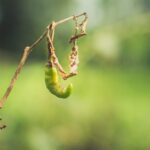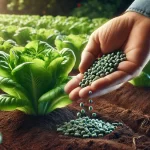Downy mildew is one of the most common fungal diseases affecting lettuce cultivation, compromising its quality and yield. Detecting mildew early and applying effective strategies to control it are crucial steps to protect your crop. In this article, we will explore how to identify the symptoms of downy mildew in lettuce, practices to prevent its spread, and technical methods to combat it, along with nutritional tips to strengthen the plant.
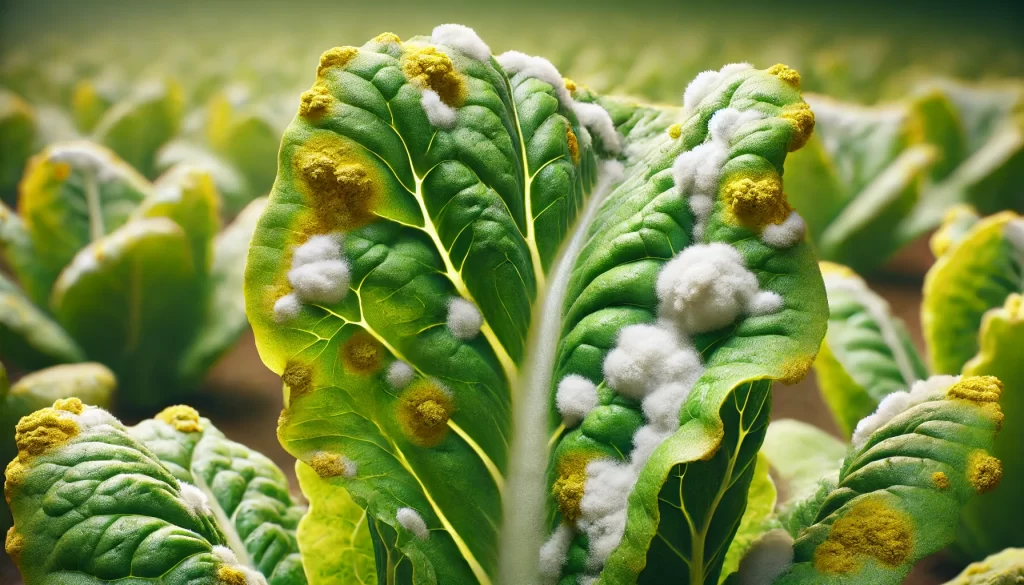
What is Downy Mildew and How Does it Manifest?
Downy mildew in lettuce is caused by fungi from the genus Bremia lactucae. This fungus thrives in conditions of high humidity and moderate temperatures, producing characteristic symptoms in the plants.
Symptoms of Downy Mildew in Lettuce
- Appearance of gray powder: A gray powdery layer is observed on the underside of the leaves.
- Yellowing leaves: Affected areas start to yellow and wilt.
- Premature leaf drop: Disease progression may cause leaf drop, reducing yield.
Early Detection and Diagnosis
Visual Observation and Monitoring
- Regular inspection: Check plants regularly, especially in areas with high humidity. Early detection of gray powder is key to effective management.
- Environmental conditions: Monitor humidity and temperature, as relative humidity above 80% promotes mildew development.
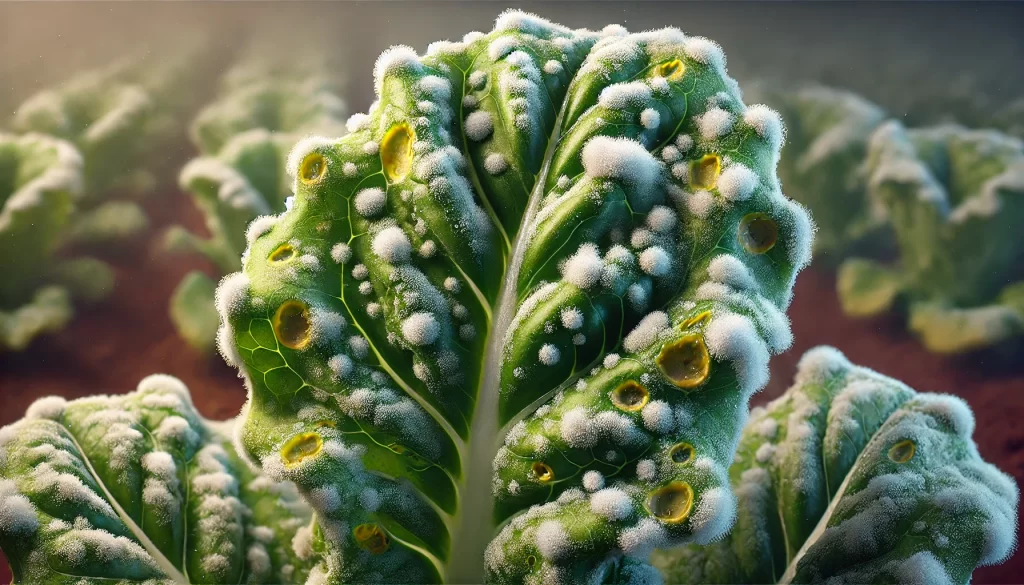
Laboratory Analysis
- In doubtful cases, conduct laboratory analysis to confirm the presence of Bremia lactucae, allowing specific and timely treatment.
Prevention and Control Strategies for Downy Mildew
Preventive Cultural Practices
- Optimize ventilation: Ensure adequate spacing between plants to improve air circulation and reduce humidity.
- Proper irrigation: Avoid overhead watering, especially in the afternoon, to reduce leaf moisture. Preferably use drip irrigation.
- Crop rotation: Replace lettuce with other non-susceptible crops to reduce the incidence of soil-borne mildew.
Control Methods
- Preventive fungicides: Apply fungicides specific for mildew at the first sign of infection. Always follow dosage and product rotation recommendations to avoid resistance.
- Removal of infected material: Remove and destroy affected leaves to minimize spore spread.
- Biological control: Use products based on natural extracts such as phosphoric acid or organic compounds that inhibit fungal development.
Table of Prevention and Control Strategies
| Strategy | Specific Action | Benefits |
|---|---|---|
| Proper ventilation | Plant spacing, selective pruning | Reduces humidity, prevents development |
| Drip irrigation | Direct watering at the base, avoiding wetting leaves | Minimizes conditions conducive to mildew |
| Fungicide application | Preventive applications at early signs | Contains early outbreaks |
| Manual removal | Remove affected leaves and disinfect tools | Prevents spore spread |
Nutritional Tips to Prevent Mildew
A robust crop is more resistant to diseases. To strengthen lettuce:
- Nutritional balance: Ensure adequate levels of nitrogen, phosphorus, and potassium for healthy and vigorous foliage.
- Micronutrients: Calcium and magnesium supplements strengthen cell walls, hindering fungal invasion.
- Fertigation: Combine irrigation and fertilization to maintain a steady nutrient supply, improving overall plant health.
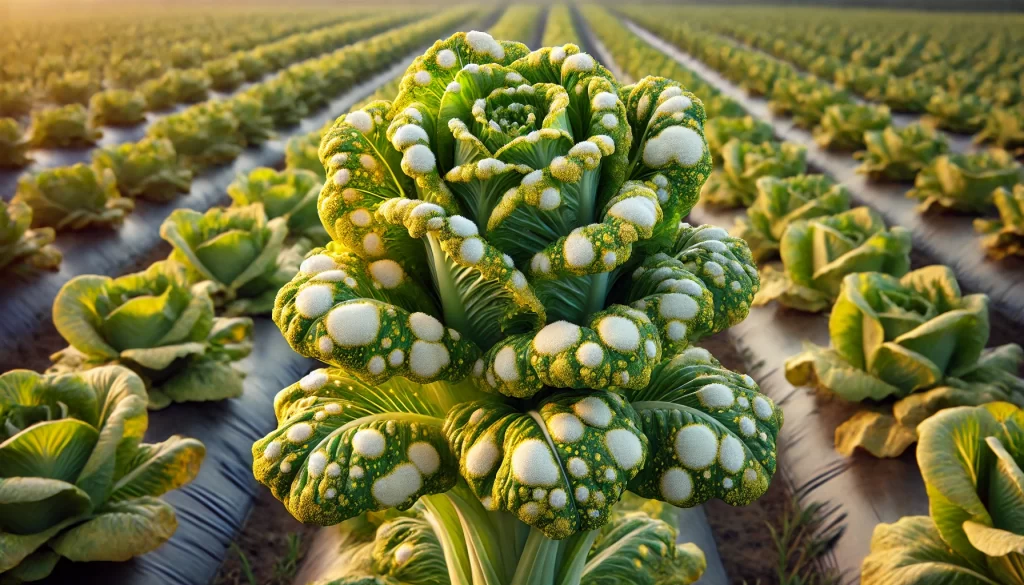
Conclusion
Detecting and controlling downy mildew in lettuce is a challenge that requires constant monitoring, proper cultural practices, and timely fungicide application. A combination of prevention, effective control, and adequate plant nutrition strengthens crops and reduces mildew incidence. By following these technical and practical guidelines, producers can protect their crops, ensure high-quality harvests, and minimize losses.
References
- Agrios, G.N. (2005). Plant Pathology. Elsevier Academic Press.
- Bliss, F.A. (2000). Vegetable Crop Production. CABI Publishing.
- Pedigo, L.P., & Rice, M.E. (2009). Entomology and Pest Management. Pearson.
 AgronoBlog – Agriculture Blog
AgronoBlog – Agriculture Blog 